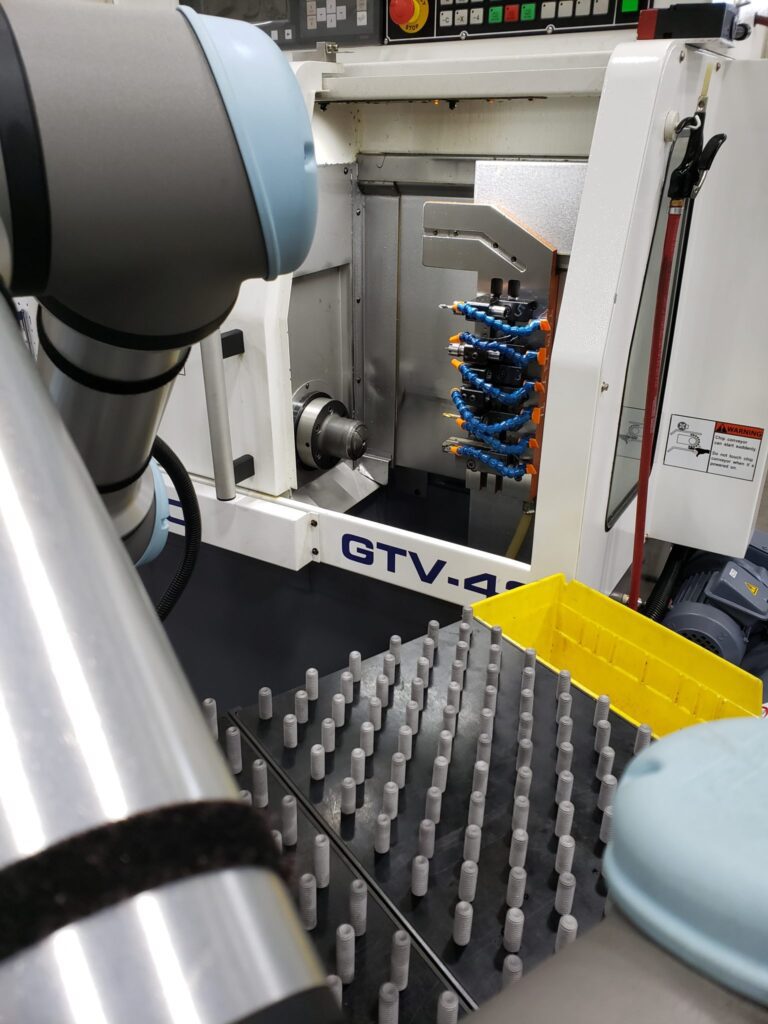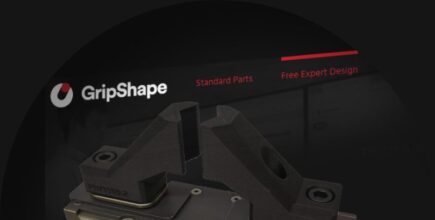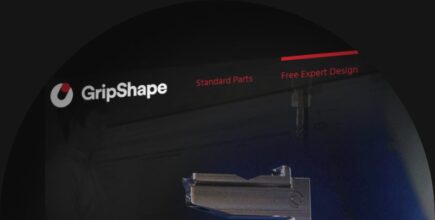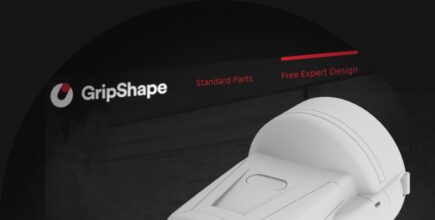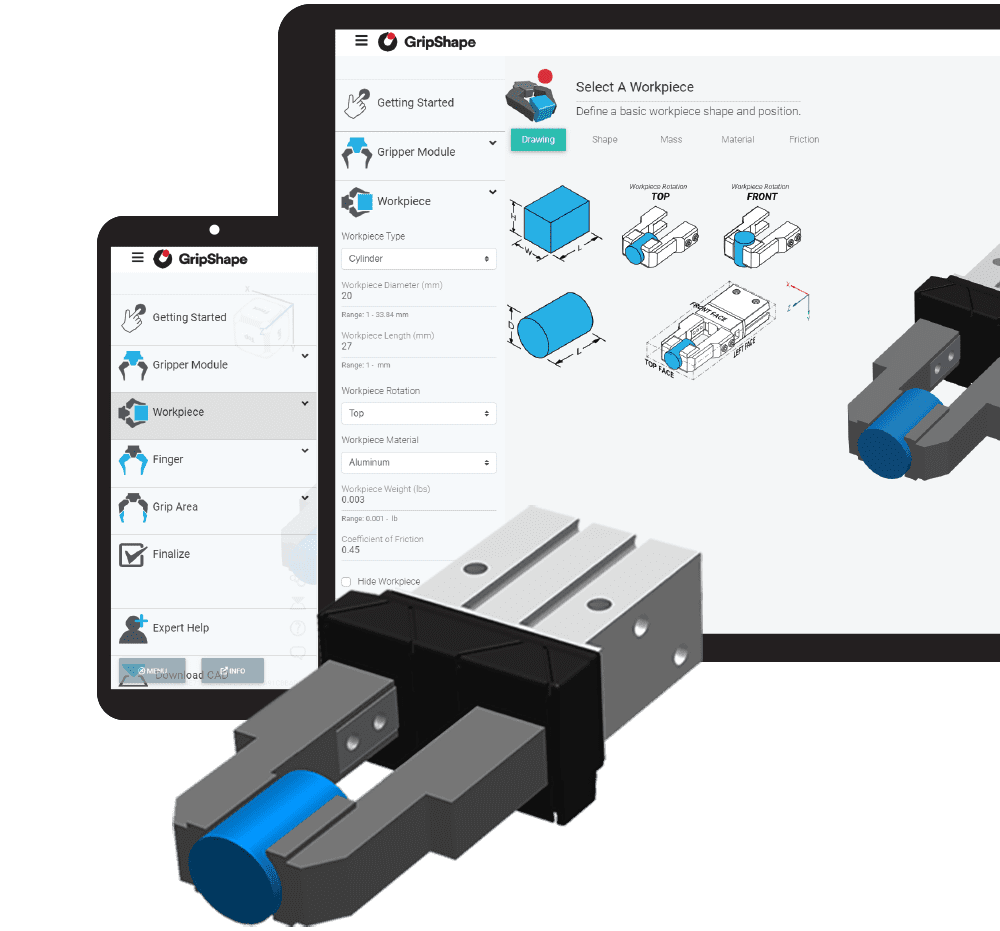Cobot Integration Project – More Than Just Grippers

Often times when trying to integrate automation or re-deploy robotic systems, gripper tooling is only one piece of the puzzle to ensure the project is a success. GripShape’s experts can help with all stages of the process and can quickly come up with a solution for stands, part positioning trays, module mounting plates and more. Below is an example of a cobot machine tending application where we deployed three, Universal Robots UR5e cobot arms to efficiently produce and inspect a series of turned components for a standard product line.
Machine Selection
An existing Cubic GTV-27 with a Fanuc i200 robot was in use but the cage was taking up valuable real estate and the vision system/robot were time consuming to set up and program for new parts. After carefully evaluating the needs of production it was determined to get the required volume of throughput and maintaining the extreme level of accuracy, the existing Cubic GTV-27 machine along with two new Cubic GTV-42 gang tool lathes would be used along with three new UR5e cobot arms. This also allowed the programming to be consistent with the machine controls and to accommodate a smaller footprint than alternative larger machines. The old Fanuc robot system was traded in and put towards the new capital investment.
Cobot Footprint Layout/Install
Once the Fanuc robot and cage were removed it was decided through careful planning that in order to maximize the available space, the machines would be set up at slight angles. This helped with creating the needed access to the machines and the part tray areas while fitting inside the small allowable footprint.
Robot Stands
Stands were designed with tapered geometry to mount the UR5e arms in order to maximize the amount of foot room when the operator was at the machine and to keep the equipment as far out of the way as possible. They were made of heavy-duty steel plates that were laser cut to exact dimensions, welded and coated to give a sturdy, durable base for the cobots.
Part Positioning Trays
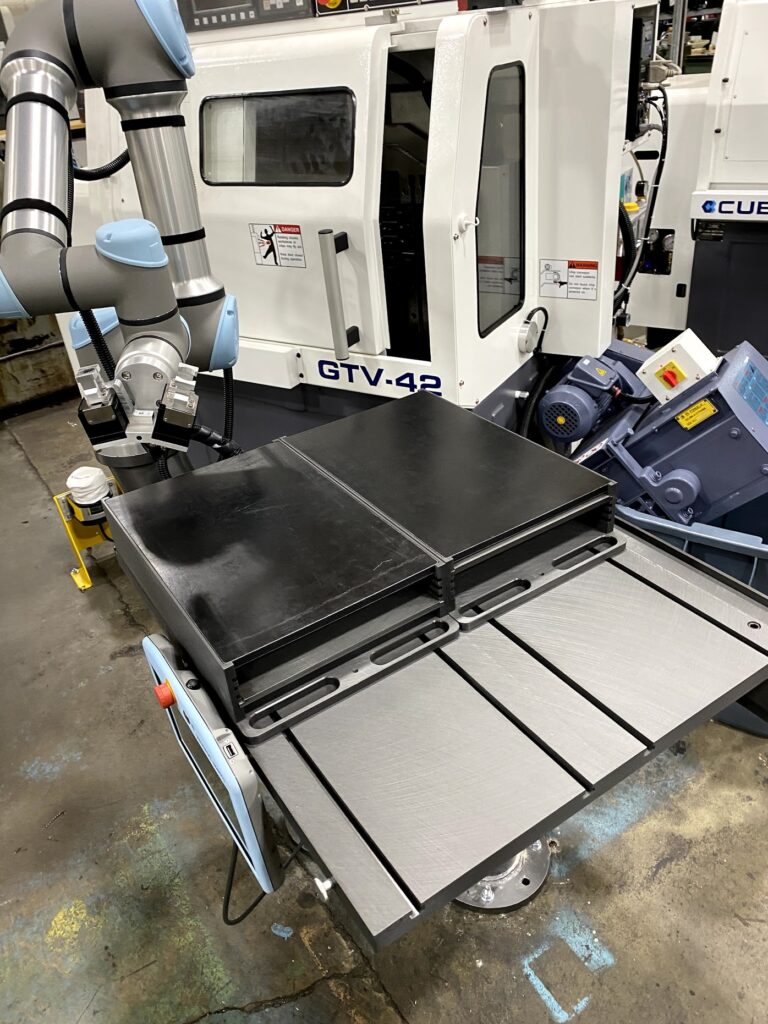
Careful consideration was taken to design part positioning trays that were universal enough to accommodate a variety of blank parts and to allow for easy, safe re-loading of the trays during operation. The tray components were CNC machined and coated to ensure their longevity.

Dual Module Brackets
This particular machine tending operation would greatly benefit from having a dual module set up to avoid any excessive movements by the robot arm to unload and load a new part into the machine, keeping cycle times as low as possible. To accommodate, our engineers designed a two-piece dual mount module interface plate that minimized the amount of space needed at the wrist of the cobot arm to fit the two modules at the right angle to fit them into the tight envelope of the machine.
CNC Gripper Fingers
Our team designed and machined sets of custom aluminum CNC gripper fingers that utilized a grip area and finger geometry that when combined with the precision electronic gripper modules would accommodate the maximum variety of parts per finger. The fingers were machined out of 6061-T6 aluminum to keep them light and help reduce the payload on the robot’s wrist. They also feature a spring plunger device to help with seating the part fully into the machine’s chuck jaws.
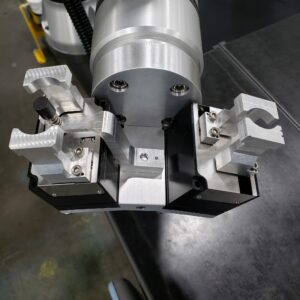
Cobot Programming
The programming of the cobots consisted of setting up each station to work with a wide range of parts loaded into gridded parts trays and to also interface with the machine’s electronics to notify the program when to open/close the door, start the machining cycle, switch tooling, etc. One aspect of this application worth highlighting is the ability to do in process part inspection with the Weiss IEG gripper modules.
Safety
Safety is always a priority when working with robotics, especially cobots where the operators are in close proximity to the robots when in use. The UR cobot arms have a lot of on-board safety features built in to aid in detecting unexpected forces, but we also installed a laser-based perimeter system that reduces the robot’s speed, increases the pressure sensitivity or shuts the system down when certain perimeters are breached. This ensures the safety of everyone who could accidentally get too close when the system is in use.
Testing
A system that is this complex needs to be run through a series of test runs to ensure that it is performing as designed and that all unforeseen issues can be worked out before production starts. In our installation, the paths were tweaked to maximize the efficiency of the robot’s movements and ensure cycles times were as low as possible.
Production
After all the testing was complete, the system was ramped up for full production and is currently producing a number of standard components daily using the same gripper tooling that was initially outfitted onto the modules.
If you have a project that you would like to speak with us about, feel free to reach out to one of our experts at 1-800-548-2935 or email us at solutions@GripShape.com
